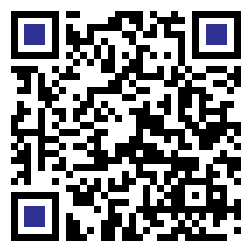Implementasi JST Pada Keamanan Data Smartphone menggunakan metode metode Bidirectional associative memory BAM
DOI:
https://doi.org/10.54367/means.v8i2.3058Keywords:
pattern recognition, Activation Function, Binary Conversion, Bidirectional Continuous Associative Memory Method, ANNAbstract
The development of smartphone technology is currently increasing from year to year, this can be seen from the many outputs of smartphone technology circulating in the market. Smartphones are now a primary need for carrying out daily life. Smartphones are used not only for communication but also for data storage. The research problem often occurs when data is stolen from smartphones from criminal acts. The purpose of this study is pattern recognition on smartphones according to the user's secret key to avoid data theft and other criminal acts. Pattern recognition uses the BAM Continuous Associative Memory Bidirectional method using Activation and sigmoid functions. The Smartphone recognition pattern consists of 5 patterns namely Z pattern, O pattern, M pattern, O pattern and W pattern. The pattern results obtained from Z=[7,7] pattern, O=[11,15] pattern, M=[ pattern 13,7], pattern X=[7,9], pattern O=[11,15]. Based on the final results after searching for 5 patterns, only pattern Z=[7.7] and pattern X=[7.9] are the same as the expected targets in pattern recognition that were entered.References
Husna, L., & Rizki, S. N. (2023). Pemanfaatan JST Pengenalan Keaslian Pola Tanda Tangan untuk Pencegahan Tindakan Pemalsuan Tanda Tangan. 08, 116-124.
Lesnussa, Y. A., & Risamasu, E. (2020). Aplikasi Jaringan Syaraf Tiruan Backpropagation Untuk Meramalkan Tingkat Pengangguran Terbuka (TPT) Di Provinsi Maluku. Sainmatika: Jurnal Ilmiah Matematika Dan Ilmu Pengetahuan Alam, 17(2), 89. https://doi.org/10.31851/sainmatika.v17i2.3434
Mubarokh, M. F., Nasir, M., & Komalasari, D. (2020). Jaringan Syaraf Tiruan Untuk Memprediksi Penjualan Pakaian Menggunakan Algoritma Backpropagation. Journal of Computer and Information Systems Ampera, 1(1), 29–43. https://doi.org/10.51519/journalcisa.v1i1.3
Phi, Lestari, J., Nurhasanah, T. M., Wahyuni, N., & Hasanuddin, D. (2023). Desain Algoritma Jaringan Syaraf Tiruan (JST) untuk Identifikasi Covid-19 dan Pneumonia. Perdhana R. 2023. JST …, 4(1), 2023.
Purba, S. (2019). Pengenalan Karakter Menggunakan Metode Bidirectional Associative Memory ( Bam ) Kontinu. 11(01), 89–101.
Rayandra. (2023). Implementasi Jaringan Syaraf Tiruan Pengenalan Pola Huruf Menggunakan Metode Bidirectional Associative Memory ( BAM ). 08, 125–133.
Revi, A., Solikhun, S., & Parlina, I. (2018). Jaringan Syaraf Tiruan Dalam Memprediksi Tingkat Pertumbuhan Industri Mikro Dan Kecil Berdasarkan Provinsi. Teknika, 7(2), 129–137. https://doi.org/10.34148/teknika.v7i2.123
Rozi Meri, D. (2022). Jaringan syaraf tiruan menggunakan algoritma hebb rule untuk diagnosa penyakit kulit manusia. 6(2), 78–87.
Yendrizal. (2022). Jaringan Saraf Tiruan Pengenalan Pola Huruf Sistem Matriks dengan Algoritma Hebb Rule. 9(5), 1466–1471. https://doi.org/10.30865/jurikom.v9i5.5015
Yunaldi, A., & Karnadi, V. (2022). Metode Bidirectional Associative Memory ( BAM ) Kontinu Pengenalan Pola Karakter Untuk Keamanan Data. 4, 380–386. https://doi.org/10.30865/json.v4i2.5339
Downloads
Published
How to Cite
Issue
Section
License
Copyright (c) 2023 Yendrizal

This work is licensed under a Creative Commons Attribution 4.0 International License.














